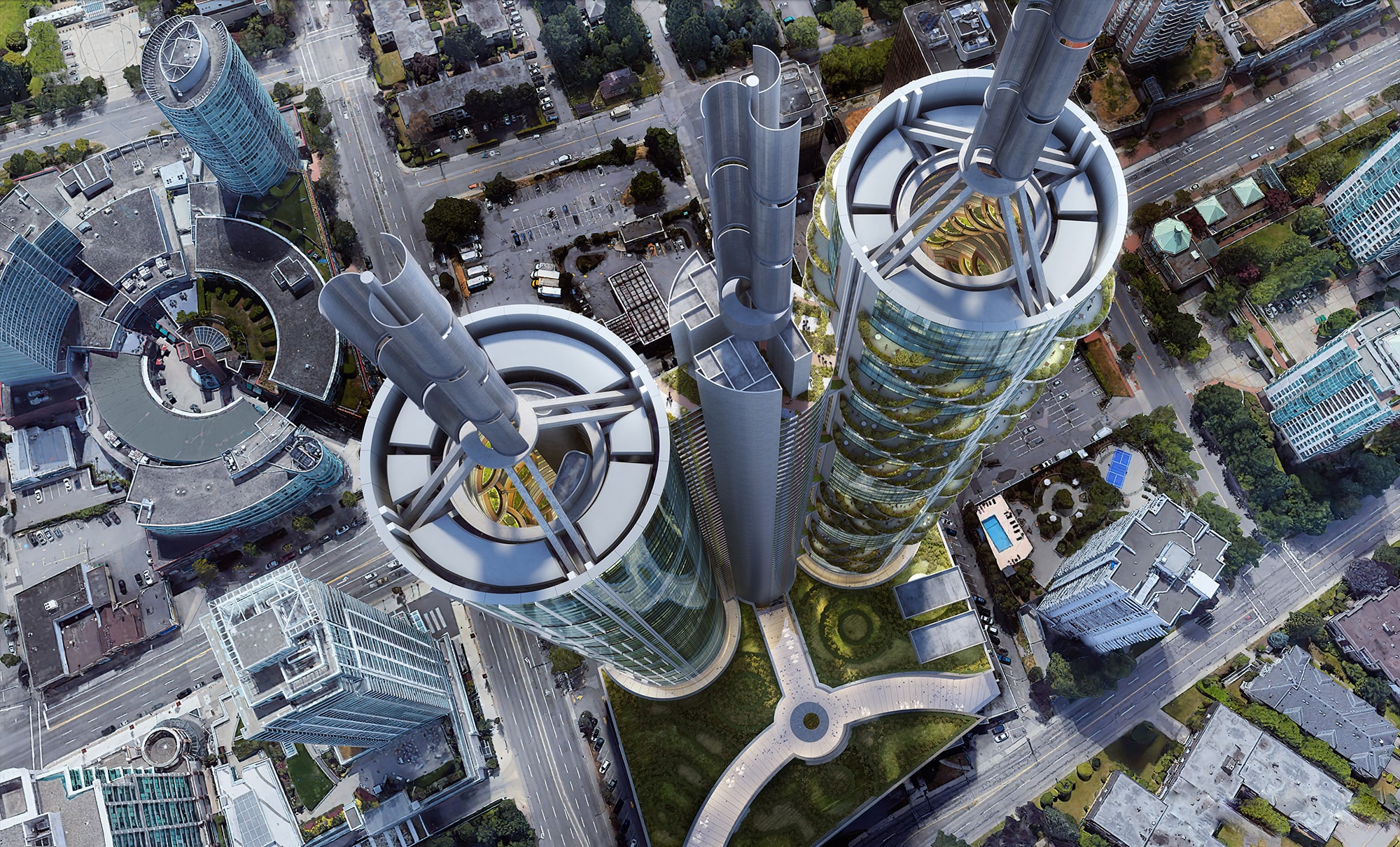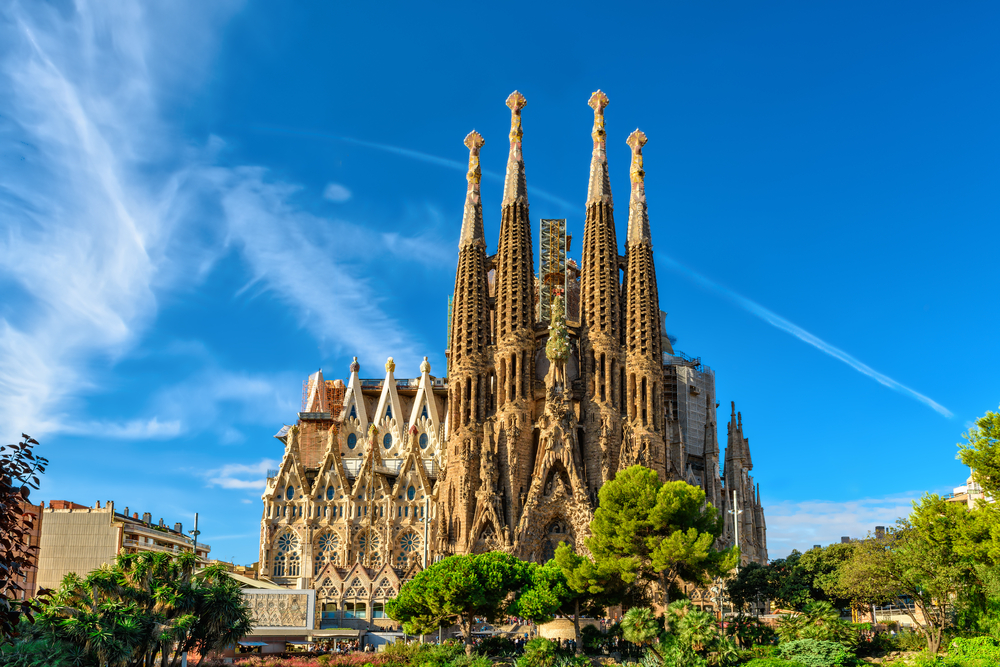The Genius of Nature: Biomimicry in the Built Environment
 On every floor of the unTower, occupants can expect cross-ventilation and more access to natural light due to a hollow core, even in interior walls (Credit: B+H, Surbana Jurong Group)
On every floor of the unTower, occupants can expect cross-ventilation and more access to natural light due to a hollow core, even in interior walls (Credit: B+H, Surbana Jurong Group)
Dr Jamie Miller
Director of Biomimicry, B+H Architects
There is no man-made technology that can better impound carbon, dissipate storm events, cool environments, slow down rainfall, purify air, fertilise food and stabilise the planet, than nature. When viewed as a technology – a system of incredible design – it remains unparalleled in terms of what it does for us and this planet. And yet, we seem to continue to build with the belief that we are somehow better off without nature or with nature outside of our built environments.
But biomimicry is changing that.
Biomimicry is innovation that is inspired by nature. It’s a design philosophy that brings to light the genius of the natural world and the ways that nature could transform the way we think, behave and create. Biomimicry is Velcro, inspired by burrs sticking to a dog’s hair. It’s wind turbine blades that are 20% more efficient, run at slower wind speeds, and are quieter because they emulate the bumps of a humpback whale fin. It’s learning from a forest about a circular economy or from a tree on how to pump fluids up tall structures without using electricity. It’s learning from spiders to make biodegradable materials at body temperature and pressure. Fundamentally, biomimicry is about shifting our perspective of the natural world to see it not as something to take from, but as something that can teach us.
What Made Humans So Different?
The value of biomimicry as a term and concept is that it helps us to remember that nature solves many of the same problems that we do, within the same context and bound by the same resources. Yet, nature does it so elegantly and sustainably.
For nearly 400 years, we have been using Newtonian thinking to isolate nature, pick it apart and reorganise it into new configurations that better suit our species. We have grown exponentially on the belief that nature is infinitely exploitable and exists for human use. We have disrupted adjacent ecosystems to harness stored energy in things like wood, coal and oil and to use fire to create new materials and re-engineer our environments. And we have built under the assumption that nature will bounce back to its original, predictable configuration after disruption. All of these have made us into incredibly powerful species that allow us to proliferate.
As things have evolved, so too has our influence, our impact. And now, we must also evolve our thinking. Human-made climate change is not going to be adequately addressed with ideas of the past. It will require bold, new strategies from a new way of thinking.
Solving Wicked Problems
In resilience literature, climate change is referred to as a “wicked problem” because it has no precedent on how to solve it. It’s riddled with so much complexity, uncertainty, high stakes and urgency that it’s challenging the mental models that have been so successful for us in the past.
This is where biomimicry has the most value. It invites us to adopt a perspective that sees nature as a genius for how to thrive on this planet. It invites us to imagine trees as buildings, creating thousands of disposable and compostable solar panels that can re-grow each year to better suit the new conditions. Imagine walls that breathe, shed, expand and sweat to local environmental pressures, just like our skin. Imagine light shafts that use fibre optics to bring light into a healthcare building to reconnect a patient deep within the room to the feeling of a cloud passing by the sun. The fur of the Polar-bear is translucent and their skin black, to pull in the sun’s energy and trap it in the underlayers next to their skin.
Nature gives us endless metaphors for how to solve the wicked problems we face today. What’s inspiring is that they are all free, we just need to learn how to speak the same language. And with emerging technologies like additive manufacturing, parametric design and computational architecture, or green chemistry, the only limitation to making these metaphors real lies in our creativity to repurpose and reimagine how our technologies can be used in a biomimetic manner.
 Antonio Gaudi used biomimicry to build the Cathedral of La Sagrada Familia, Barcelona, Spain. (Credit: Shutterstock)
Antonio Gaudi used biomimicry to build the Cathedral of La Sagrada Familia, Barcelona, Spain. (Credit: Shutterstock)
A Hopeful Future: A Young Species, Not a Bad One
We are seeing concrete that can self-heal, buildings that breathe, seashell-inspired impellers that can move 10 million gallons (37.9 million litres) of fluid with the electricity of two light bulbs. We are seeing HVAC (heating, ventilation and air-conditioning) systems that coordinate like bees, tidal energy generators inspired by kelp, and paints that can self-clean like a lotus leaf.
In the next eight years, there is an expected $1.6 trillion of global output for biomimicry-based innovation. The capabilities of biomimetic designs and the growing interest in the field are truly hopeful.
As Janine Benyus — the woman who coined the term “biomimicry” — once told me, we are not necessarily a bad species, but just a very young one. At a time when existential challenges like climate change are driving up eco-anxiety and mental health issues, we need a hopeful strategy. And in my 20 years in the field, I have yet to find a more comprehensive strategy than biomimicry. What’s great about it is that even though it stands to lead us into a new generation of design, it is drawing on thousands of years of ancient practice.
Despite it being a new term, biomimicry is not a new idea. Antonio Gaudi used biomimicry to build the Sagrada Familia, where the structural columns branch out to provide greater support for the vault and roof – evoking a sense of walking through a forest. Leonardo da Vinci was constantly looking to nature for better ideas. Indigenous people copied Arctic hare feet to make snowshoes and emulated polar bear dens to make igloos. And having works with an Inuit elder, she once told me that her people “have been doing biomimicry for thousands of years”.
Biomimicry is not a new idea, but it is a concept when time has come. It’s inspiring the next generation to reimagine the way we think, behave and create.
Biomimicry is helping architects challenge their thinking and models. This includes going beyond the idea of “doing less harm” in our designs. This suggests that humans are somehow not meant to be in nature. But we are nature. Our exhale is an inhale for a tree.
We just need to reorient the principles we follow to embrace the basic principle that nature creates conditions conducive to more life.
We want to create built environments that are contributing to their place. In India, we have designed a residential building that sequesters more carbon, captures more storm water, purifies more air and reduces the ambient temperature more than if that building was never built. We strive to make all designs — whether architecture or master plans — to function as efficiently as a forest.
We have integrated bio-inspired technologies to improve efficiencies. We have copied elephant skin to make passive cooling facades, and emulated forest ecology to inspire a circular food economy. We design in a way that leverages the hidden ecological assets of a place and fits within the natural trajectory of the place. All to save money and effort down the road, and to build more harmoniously with our environments. We know that it is expensive to fight nature.
We Live Because Everything Else Does
As we continue to search for the designs that will best support our species, it might be time to look outside our studios, cities, and even ourselves. Nature quietly takes care of us, providing our food, air, water, materials and general health. As a species, it seems we have forgotten the importance of the natural world not only in the services it provides, but in how it can teach us how to thrive on this planet over the long haul.
Indigenous author Richard Wagamese said that “we live because everything else does”. But our survival as a species might come when we learn how everything else lives.
Connect with Us
Jamie Miller
Email: [email protected]


